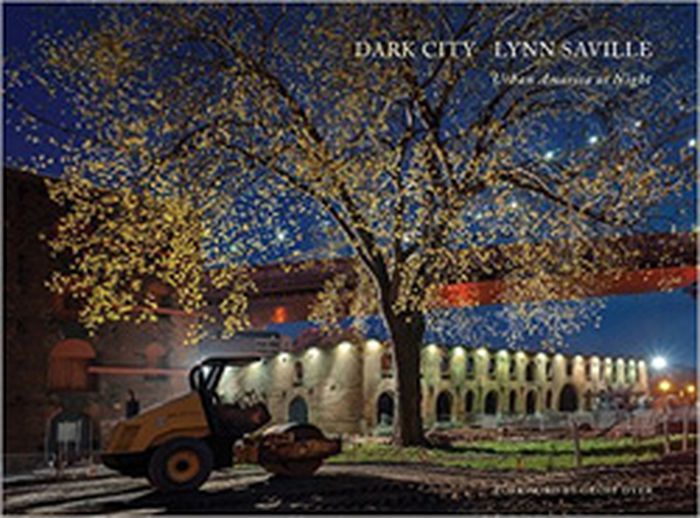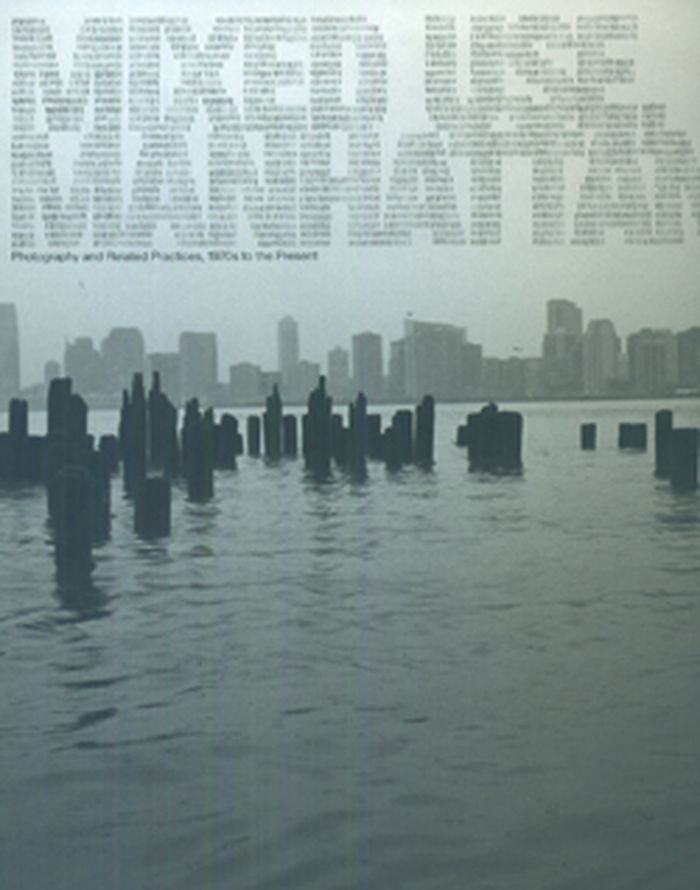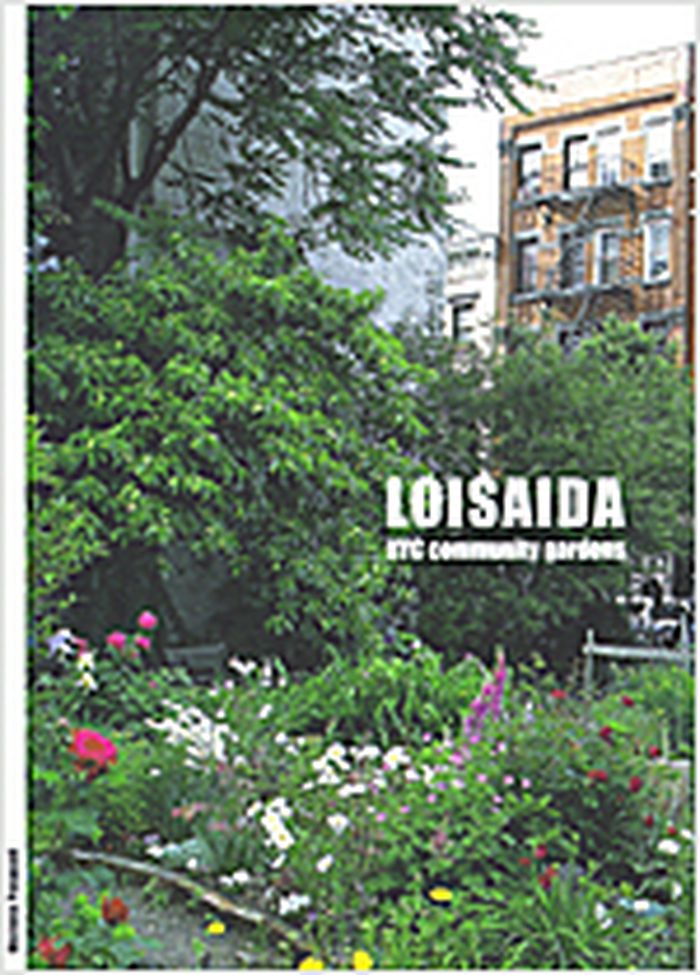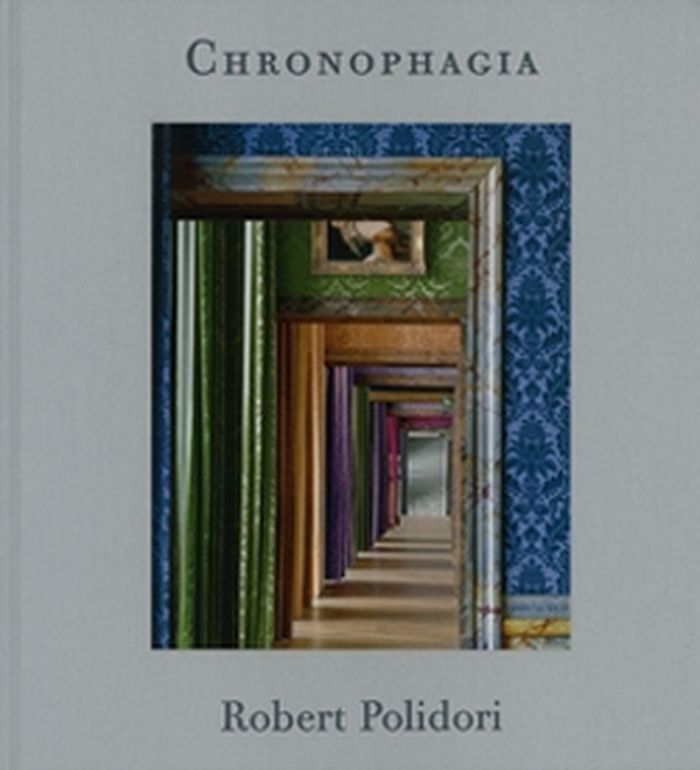Lynn Saville: Dark City
$60.00
(available to order)
Summary:
Arthur Danto has described Lynn Saville as New York's answer to Eugène Atget, because she "prowls her city at the other end of the day, picking up pieces of the past in the present, just before it is swallowed by shadows." For her new monograph, Dark City, Saville focused on vacant spaces--shuttered storefronts, back alleys, blank billboards, empty lots--with the(...)
Lynn Saville: Dark City
Actions:
Price:
$60.00
(available to order)
Summary:
Arthur Danto has described Lynn Saville as New York's answer to Eugène Atget, because she "prowls her city at the other end of the day, picking up pieces of the past in the present, just before it is swallowed by shadows." For her new monograph, Dark City, Saville focused on vacant spaces--shuttered storefronts, back alleys, blank billboards, empty lots--with the occasional ghostly figure hurrying through the frame. Working at twilight and dawn with a medium-format camera (setting up her tripod quickly so as not to attract police attention), Saville captured busy city streets depopulated and emptied out, industrial spaces and storefronts alike gone quiet. Color and light come from the sky, streetlights, neon signs or surveillance lighting. Seemingly otherworldly, the images in Dark City also tell a more pragmatic story of the changing urban landscape--vacancies caused by financial crisis, and construction projects spurred on by economic recovery, gentrification and development.
Photography monographs
$52.95
(available to order)
Summary:
When recession-plagued New York City abandoned its industrial base in the 1970s, performance artists, photographers, and filmmakers found their own mixed uses for the city's run-down lofts, abandoned piers, vacant lots, and deserted streets. Gordon Matta-Clark turned a sanitation pier into the celebrated work Day's End and Betsy Sussler filmed its making; the photographic(...)
Mixed use, Manhattan : photography and related practices, 1970 to the present
Actions:
Price:
$52.95
(available to order)
Summary:
When recession-plagued New York City abandoned its industrial base in the 1970s, performance artists, photographers, and filmmakers found their own mixed uses for the city's run-down lofts, abandoned piers, vacant lots, and deserted streets. Gordon Matta-Clark turned a sanitation pier into the celebrated work Day's End and Betsy Sussler filmed its making; the photographic team Shunk-Kender shot a vast series of images of Willoughby Sharp's Projects: Pier 18 (which included work by Vito Acconci, Mel Bochner, Dan Graham, Matta-Clark, and William Wegman, among others); and Cindy Sherman staged some of her Untitled Film Stills on the streets of Lower Manhattan. This publication documents and illustrates these projects as well as more recent work by artists who continue to engage with the city's public, underground, and improvised spaces. The book (which accompanies a major exhibition) focuses on several important photographic series: Peter Hujar's 1976 nighttime photographs of Manhattan's West Side; Alvin Baltrop's Hudson River pier photographs from 1975-1985, most of which have never before been shown or published; David Wojnarowicz's Rimbaud in New York (1978-1979), the first of Wojnarowicz's works to be published; and several of Zoe Leonard's photographic projects from the late 1990s on. The book includes 70 color and 130 black-and-white images, a chronology of the policy decisions and developments that altered the face of New York City from 1950 to the present; an autobiographical story by David Wojnarowicz; and essays by Johanna Burton, Lytle Shaw, Juan Suarez, and the exhibition's curators, Lynne Cooke and Douglas Crimp.
Public Space
$35.95
(available to order)
Summary:
The book guides the readers through the community gardens created in vacant lots in the little Manhattan neighborhood called Loisaida, born to accomodate the waves of immigrants moving to the USA. Michela Pasquali tells the gardens’ story and their development and evolution over the past thirty years, including the recent risk of their being demolished due to building(...)
Loisaida : NYC community gardens
Actions:
Price:
$35.95
(available to order)
Summary:
The book guides the readers through the community gardens created in vacant lots in the little Manhattan neighborhood called Loisaida, born to accomodate the waves of immigrants moving to the USA. Michela Pasquali tells the gardens’ story and their development and evolution over the past thirty years, including the recent risk of their being demolished due to building speculation in the area. First created at the beginning of the 1970s, thanks to the initiative of a group of local residents, the Loisaida community gardens stand out as one of the most interesting examples of New York’s hidden green urban spaces. A blend of different cultures, languages, religions and habits which overlap and come together in the evocative names chosen for the gardens: El Sol Brillante, Brisas del Caribe, Miracle Garden...
Gardens
$50.00
(available to order)
Summary:
From his images of the Chateau of Versailles under restoration to the faded grandeur of Havana, to scenes of devastation from Chernobyl after the nuclear explosion and a New Orleans ravaged by Hurricane Katrina, Robert Polidori is drawn to detritus, shattered worlds and elegant ruin. Often considered an architectural photographer, Polidori captures more than buildings:(...)
Robert Polidori: chronophagia
Actions:
Price:
$50.00
(available to order)
Summary:
From his images of the Chateau of Versailles under restoration to the faded grandeur of Havana, to scenes of devastation from Chernobyl after the nuclear explosion and a New Orleans ravaged by Hurricane Katrina, Robert Polidori is drawn to detritus, shattered worlds and elegant ruin. Often considered an architectural photographer, Polidori captures more than buildings: his highly detailed views of interiors evoke both the intimate and the mysterious, where in the humanity of these photos is felt in its very absence, in the traces left behind in vacant spaces once inhabited. Chronophagia is a sampling of Polidori's many famous projects. This volume contains the artist's own selection of more than 100 photographs, from the classics to several rarely seen images. The result is a beautifully edited compendium of Polidori's 28-year career and a visual exploration of the liminal space between past and present, of worlds on the brink of disappearance.
Photography monographs
$41.95
(available to order)
Summary:
"If it isn't Electric, it isn't Modern." Such was the slogan of the Philadelphia Electric Company, developer of an unprecedented network of massive metropolitan power stations servicing greater Philadelphia at the turn of the twentieth century. These once-brilliant sentinels of civic utility and activity were designed to convey solidity and immensity in an age of deep(...)
Engineering Structures
November 2016
Palazzos of power : central station of the Phalidelphia Electric Company
Actions:
Price:
$41.95
(available to order)
Summary:
"If it isn't Electric, it isn't Modern." Such was the slogan of the Philadelphia Electric Company, developer of an unprecedented network of massive metropolitan power stations servicing greater Philadelphia at the turn of the twentieth century. These once-brilliant sentinels of civic utility and activity were designed to convey solidity and immensity in an age of deep public skepticism. They now stand vacant and decaying, a blight in the eyes of city planners and a beacon to urban explorers.'the first book on the buildings and machines that made possible the electrification of the United States, "Palazzos of power" offers a visual and analytical exploration of architecture, technology, place, loss, and reuse. With a foreword by David Nye, this collection of Joseph Elliott's large-format photographs reveal the urban landscape, monumental spaces, giant machinery, and intricate controls that made up the central station. Aaron Wunsch's essay provides historical context on the social and political climate.
Engineering Structures
books
Todd Hido: witness number 7
$52.95
(available to order)
Summary:
As guest editor of Witness Number 7, Todd Hido creates a relationship between his own photographs of vacant interiors of foreclosed homes - the first time this series has been published as a group - with portraits made by Leon Borensztein during the 1980s. Hido's images contain traces and impressions of lives previously having been lived in the now-empty homes. His potent(...)
Todd Hido: witness number 7
Actions:
Price:
$52.95
(available to order)
Summary:
As guest editor of Witness Number 7, Todd Hido creates a relationship between his own photographs of vacant interiors of foreclosed homes - the first time this series has been published as a group - with portraits made by Leon Borensztein during the 1980s. Hido's images contain traces and impressions of lives previously having been lived in the now-empty homes. His potent and surreal photographs of empty spaces evoke a longing for the time when things were better in those homes. What went wrong? Who used to lived there? Borensztein, an immigrant from Poland, visited homes and businesses in the suburbs of Stockton, Fresno and Bakersfield, photographing his subjects in front of a generic backdrop to create a rich sociological document. In Witness Number 7, Borensztein's subjects stand in metaphorically for the families evicted from Hido's foreclosed homes. The book closes with what Hido describes as a slowly cooked stew of books a 40-page run of images documented off the pages of certain books in his library that have influenced Hido's work during the past 20 years, curated into a narrative of echos and inspirations.
books
January 2009
Photography monographs




